28. July 2001 10:48
by Rene Pallesen
0 Comments
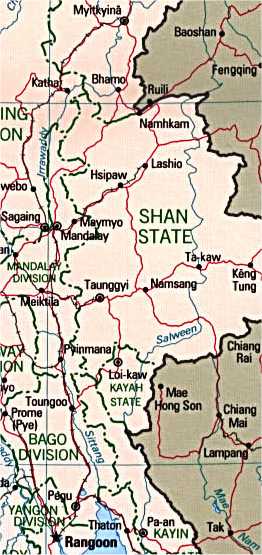 When I initially arrived in Yangon / Rangoon, I wanted to fly up Bhamo - one of the bigger towns north of Burma. I also considered exploring Myitkyinã - a town further north of Bhamo.
My Lonely Planet guide indicated that the only border crossing into China was to the east of Bhamo. My initial plans to Burma also included exploration of western China. However, I was disappointed by the military turning me back, despite the fact that my Lonely Planet guide said I could cross into China at Ruili.
I decided instead to fly to Mandalay, not only because it was cheap to do so, but it saved me a 20-hour bus ride there from Yangon.
When I initially arrived in Yangon / Rangoon, I wanted to fly up Bhamo - one of the bigger towns north of Burma. I also considered exploring Myitkyinã - a town further north of Bhamo.
My Lonely Planet guide indicated that the only border crossing into China was to the east of Bhamo. My initial plans to Burma also included exploration of western China. However, I was disappointed by the military turning me back, despite the fact that my Lonely Planet guide said I could cross into China at Ruili.
I decided instead to fly to Mandalay, not only because it was cheap to do so, but it saved me a 20-hour bus ride there from Yangon.
 I heard about a song for sailors.
I heard about a song for sailors.
“To be a real sailor, the sailor would have to have been to Mandalay way upriver”
I quite liked Mandalay.
The photo below, is of Mandalay Hill.
During World War II (20 March 1945), the British and the Japanese fought one another to gain control of the position on this hill.
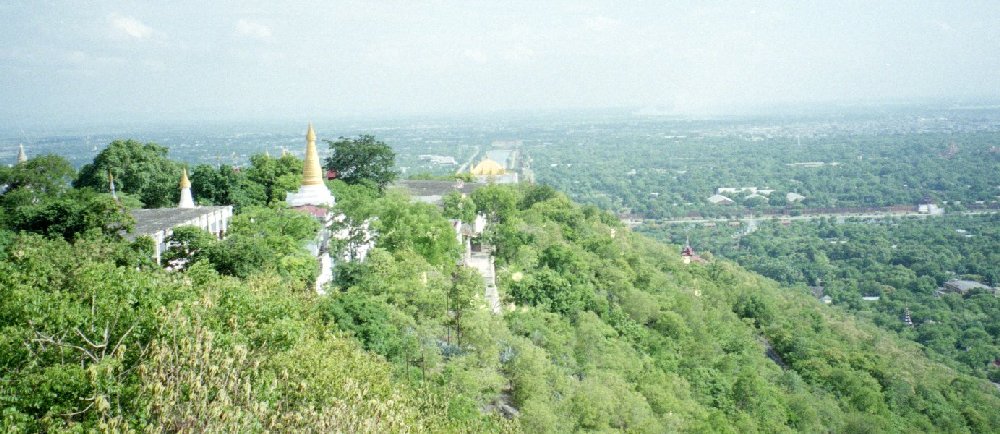
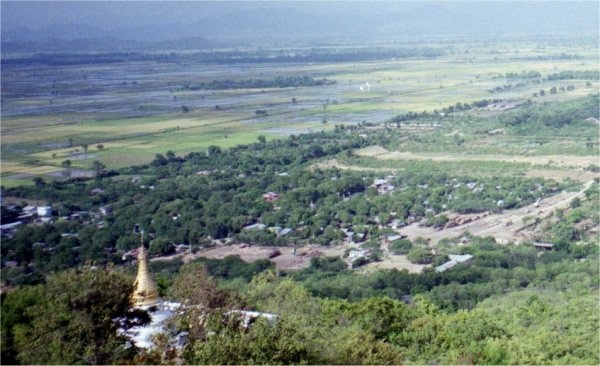 The photo to the left is taken from the hill itself facing east - as you can see, it has an aerial view of the whole city, and puts any oncoming enemies at a disadvantage. Control of Mandalay was important during the war, as the soldiers were able to set up artillery and attack anyone approaching the fortress.
This hill was of big strategic importance.
The building you see near the shrine is a monument to the British regiment who managed to take control of this hill from the Japanese.
At the eastern part of the delta, a lot of logging takes place. There was a train line built that used to cart all the trees/wood for export to Thailand.
The photo to the left is taken from the hill itself facing east - as you can see, it has an aerial view of the whole city, and puts any oncoming enemies at a disadvantage. Control of Mandalay was important during the war, as the soldiers were able to set up artillery and attack anyone approaching the fortress.
This hill was of big strategic importance.
The building you see near the shrine is a monument to the British regiment who managed to take control of this hill from the Japanese.
At the eastern part of the delta, a lot of logging takes place. There was a train line built that used to cart all the trees/wood for export to Thailand.

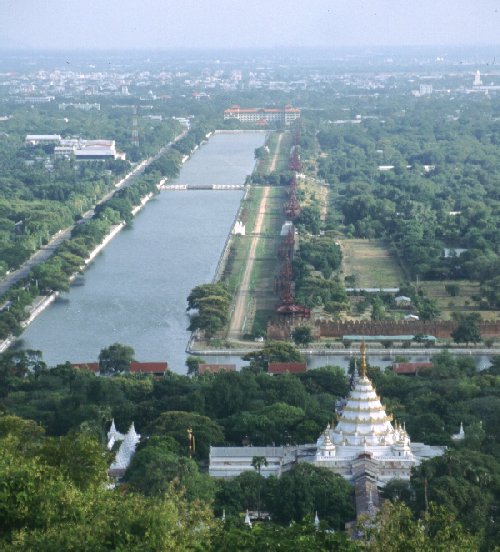 The moat around the fortress is man-made.
The moat around the fortress is man-made.
Although man-made, comes from the local river.
The original fortress was burnt to the ground.
The whole fortress covered an area of 2.5 x 2.5 km
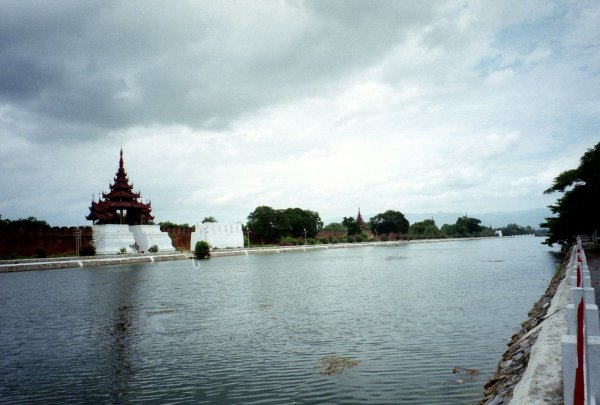

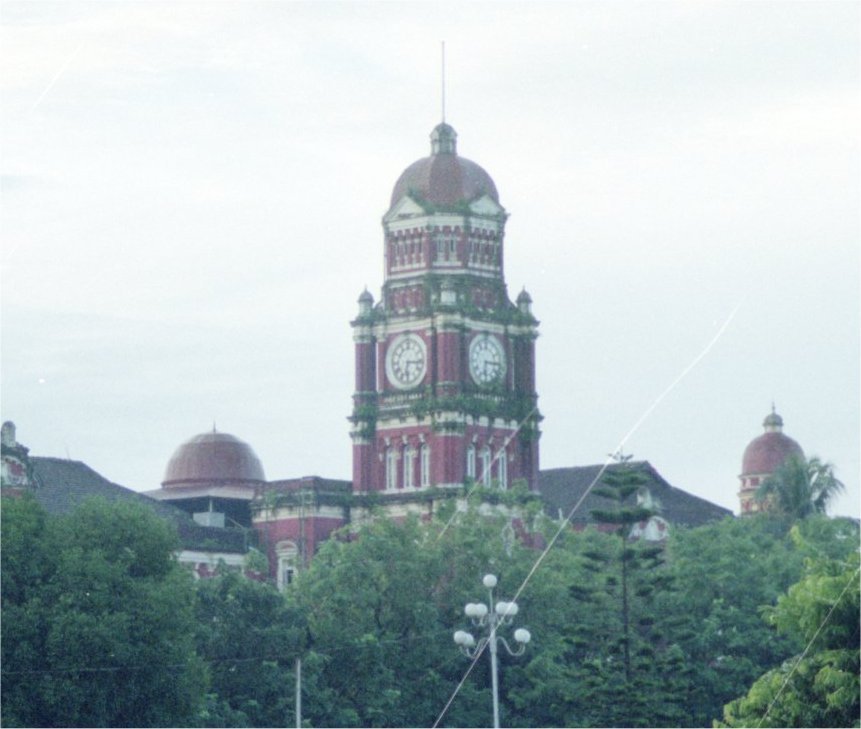
The design of Mandalay was quite colonial, and surprisingly, most of the streets were at 90º to one another.
Overall, I found Mandalay the most expensive city to travel to in Burma.
No matter what one does in Mandalay, be it explore Mandalay Hill or the city itself, the locals always had “special” foreigner prices. It really annoyed me.
I tried to use local currency as much as possible. However, FEC (Foreign Exchange Currency) was more valuable and worth more to the locals. FEC is also used in China, and one tries to use local currency as much as possible. Any item you buy has 2 prices - and obviously it is cheaper to use local currency than to use FEC.
I must admit, even Mandalay Hill was not that nice for the price I paid to explore it. It was also expensive just to go into the fortress.
Surprisingly, I could not find maps of the area that was not more that 40 years old.
28. July 2001 10:47
by Rene Pallesen
0 Comments
Politics . . .
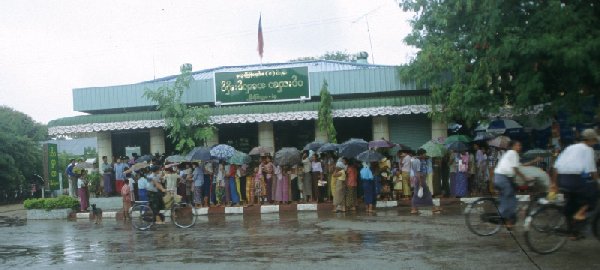 There is a lot of politics going on in Burma that an outsider should not get involved in - Burma is one of those countries where political opinions are best kept to oneself.
In Burma, use of the Internet and mobile phones is illegal. This is the government's way of controlling the information entering the country. Even access to equipment such as laptops is illegal - the country is so poor that many could not afford such a piece of equipment.
I saw many young women queueing for their rations. They were standing so close together that I thought they were lesbians! *laugh* The girls stand close together so another person cannot jump the queue by pushing in.
There is a lot of politics going on in Burma that an outsider should not get involved in - Burma is one of those countries where political opinions are best kept to oneself.
In Burma, use of the Internet and mobile phones is illegal. This is the government's way of controlling the information entering the country. Even access to equipment such as laptops is illegal - the country is so poor that many could not afford such a piece of equipment.
I saw many young women queueing for their rations. They were standing so close together that I thought they were lesbians! *laugh* The girls stand close together so another person cannot jump the queue by pushing in.
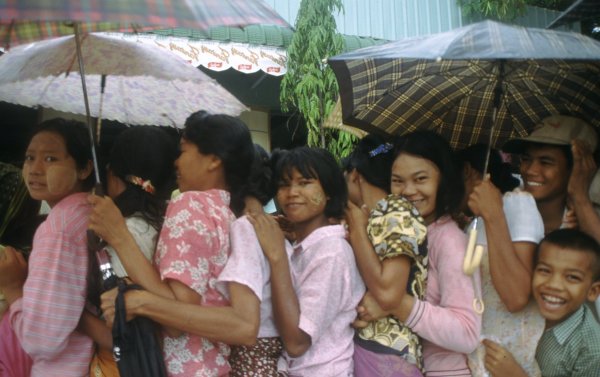
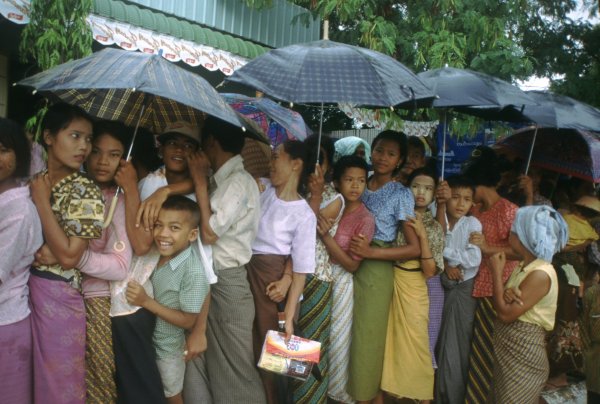
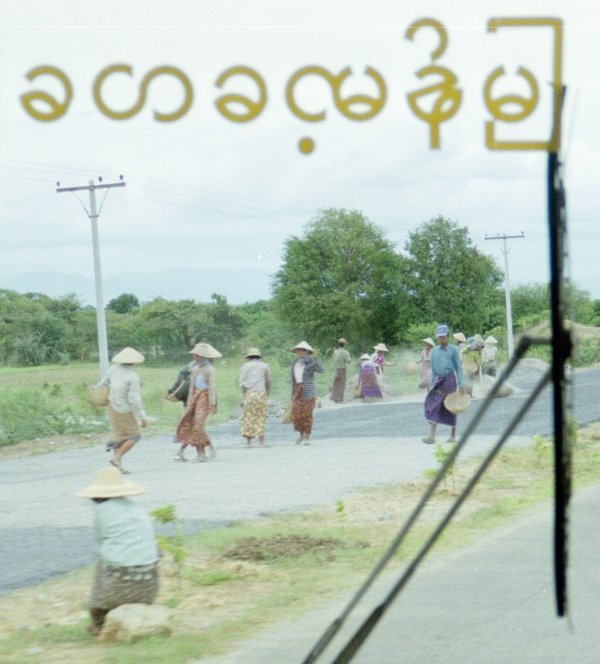
The girls here are very young, some have barely reached puberty and are doing some very hard work.
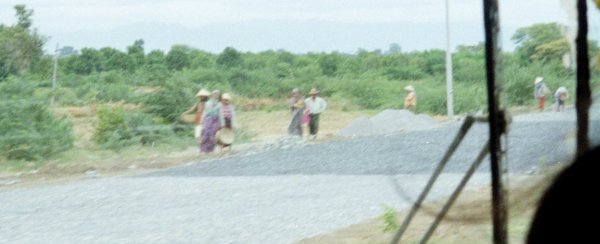
There is a lot of critique by Amnesty International, of Burma's use of young girls to provide maintenance for the roads.

28. July 2001 10:47
by Rene Pallesen
0 Comments
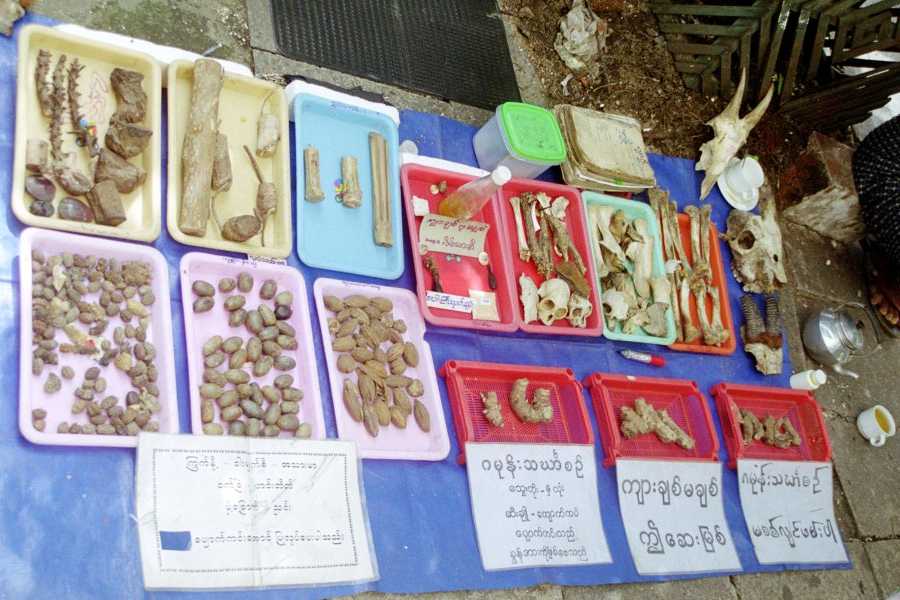 Medicine . . .
Medicine . . .My girlfriend, Arumi, tells me one sees the wares of a 'Medicine Man' quite often throughout Asia.
Whether they sit by the roadside, or whether they own a shop in a building, one will see very similar items being sold around Asia.
The “pellets” you see here are in fact different types of roots such as ginger or some unknown vegetable, that have been sun or air dried.
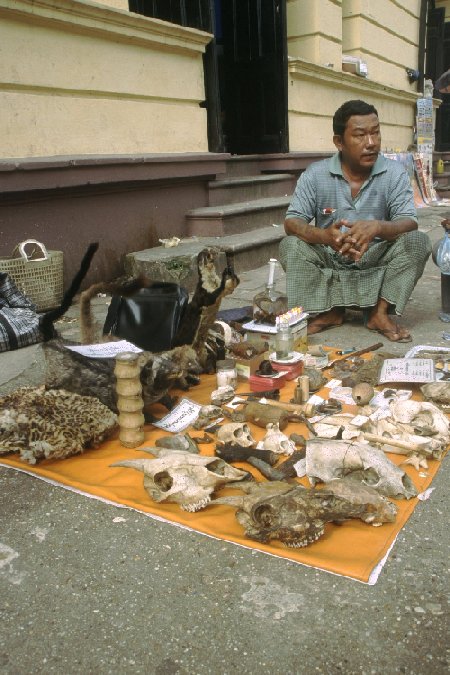
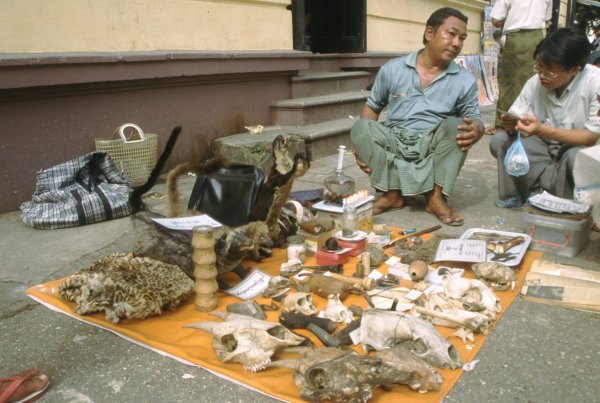
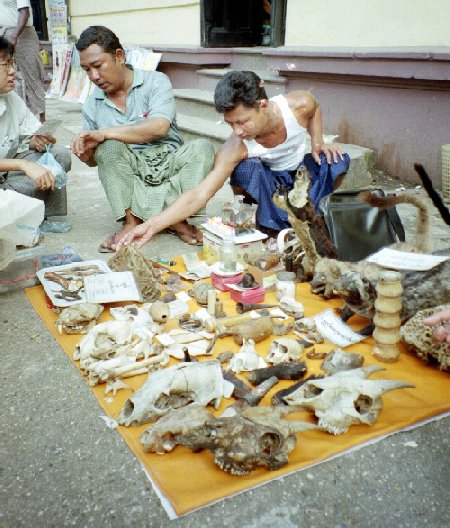
You will see the antlers of various animals such as deer or even rhino. There are also skulls from different animals - some of these animals may be endangered species, but somehow you will see them being sold in these markets.
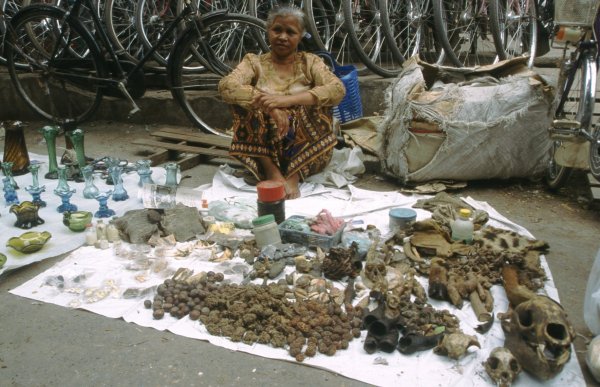
These skulls are definitely not being used as “trophies” around the house!
The Burmese, like many Asians, believe in using very 'natural' remedies to cure common ailments.
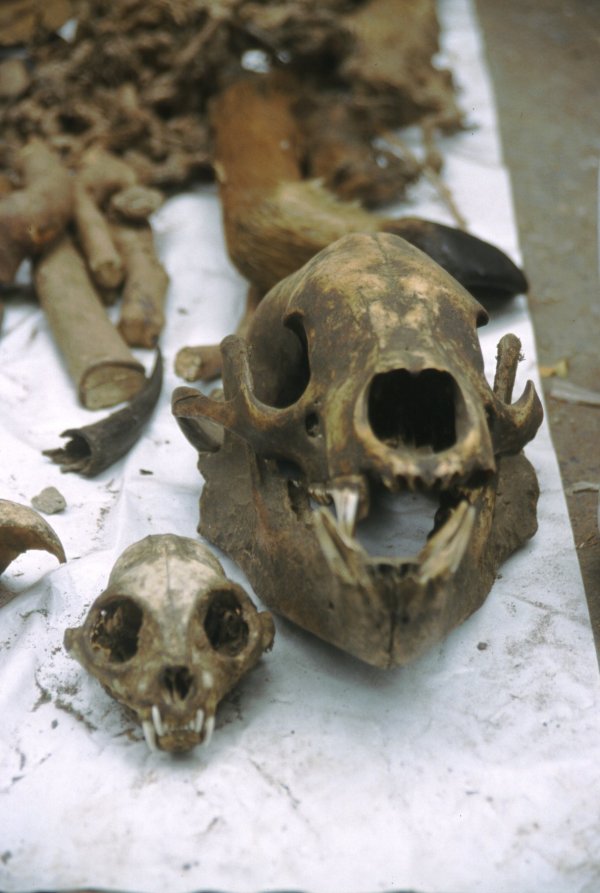 Perfect Moments Photography | Original Image
Perfect Moments Photography | Original Image